|
by Dark Watcher |
|
The CreatiVision was introduced in 1981 by VTech (Video Technology Limited), a Hong Kong based company. The unit was actually a
computer hybrid (a small trend in those days. See also APF Imagination Machine). The
following is an actual excerpt from a VTech advertisement. (c) CREATIVISION The serious personal computer you've been waiting for! At last! A total computer system. Right in your own home! Start with a fully functional computer... for the low price of a video game set! Most ordinary systems give you only a video game unit to start with. If you want to make it into a real computer, you have to buy quite a few more pieces of expensive hardware. But CREATIVISION gives you a fully functional Personal Computer unit with built-in keyboard and built-in memory, capable of running software packages and of being programmed. And all for the price you'd pay for an ordinary video game set!Appearance wise it was a typical console at heart, but by rotating the console's joysticks 90 degrees and then inserting them into two compartments on top of the console you were given a makeshift keyboard. Throw in a BASIC program cart, and your console becomes a microcomputer. The CreatiVision could also be expanded with 'plug-compatible' hardware such as a cassette player, additional rubber keyboard, parallel I/O interface, floppy disk drive, modem (probably unreleased), generic Centronics printer and one memory expansion module for use with the Basic language cartridge. VTech truly attempted to capitalize on profits from both markets. |
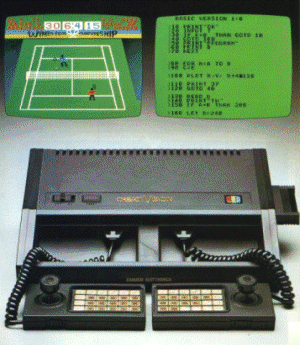 |
|
The CreatiVision was distributed throughout Europe, South Africa, China, Japan and Australasia. It was marketed
as the Dick Smith Wizzard, FunVision Computer Video Games System and Hanimex Rameses amongst other. See the Models section for
the many variations that were released.
A total of 17 confirmed cartridges were released for the original CreatiVision, but the exact number cannot be confirmed with the
possibility of the clones releasing there own titles.
The VTech CreatiVision family died off with the inevitable Videogame Crash of 1983 and the arrival of the
Nintendo Entertainment
System. However VTech was wise enough to spin off the CreatiVision technology into its Laser line of computer systems. FACT: A closer inspection shows that early releases of CreatiVision were labeled as MK II Laser 500. CreatiVision was simply a repackaged computer in console clothing. Funny thing is although it was clearly a console, it was never advertised as one. In order to make sure they had a following in both markets, VTech also introduced its Laser 2001 line of computers in 1984. The Laser 2001 was compatible with all CreatiVision expansion devices, and sported a cart slot for CreatiVision games. |
|
 HANDS ON REVIEW HANDS ON REVIEWby Luca "MADrigal" Antignano (Special Guest Contributor) |
|
|
Hong Kong, 1981. Electronic game manufacturer VTech attempts to join the home video gaming market by engineering an original system
capable of competing against current market leaders which included Atari (VCS / 2600) and Mattel (Intellivision). VTech's idea was certainly clever: to offer users what the competitors couldn't do by allowing them the ability to program their own software within a gaming console. This would be accomplished through the release of optional, computer-style peripherals such as a keyboard, cassette tape player/recorder, printer, etc. The "hybrid" computer/console system was not necessarily a new concept. The North American electronics company APF released the Imagination Machine, the first console hybrid, in 1978. Unfortunately, this concept garnered little success when pitted against the industry heavyweights including Atari and Mattel. VTech was determined to not suffer the same fate as APF by utilizing the latest advances in microprocessor technology. This new console, named the CreatiVision, was quite an ambitious undertaking. VTech engineers incorporated the most advanced hardware that was available such as the Rockwell 6502A microprocessor running at 2 MHz, a Texas Instruments TMS9928/9929 (NTSC/PAL) video display processor managing up to 32 sprites on a 256 x 192 pixels screen at 16 colors and a Texas Instruments SND76489 sound generator featuring 3 mono + 1 noise channels. Technology at this high a level had never been used in a home video game and computer system! |
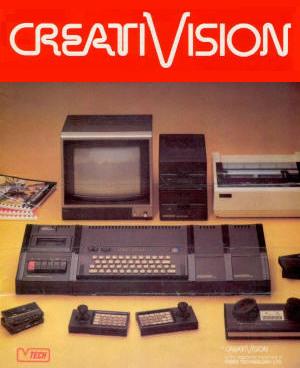 |
|
This advanced technology would be very expensive if produced in Europe or North American, but VTech had the advantage of being located
in Hong Kong where manufacturing costs were significantly less. For this reason, the CreatiVision system was less expensive than
gaming-only systems such as Atari VCS and Mattel Intellivision. With the hardware phase of the project completed, the next step was the development of dedicated software. At first, programmers focused their efforts on creating new game concepts, but cost considerations derailed this plan. A more effective means would be to simply clone top games, change some graphics, sounds and plot and get it to market. This approach was quite common in the 80s, even though it often caused copyright issues. The CreatiVision was promoted with a massive advertising campaign, claiming to be the most powerful home gaming computer system on the market. Promo leaflets featured comparisons with other home computers such as the Commodore Vic-20, Atari 400 and Radio Shack TRS-80, with the CreatiVision obviously stated to be the best of the lot. Many optional peripherals were advertised, many which were simply concept/proto products that would never actually be released. The CreatiVision system debuted in the Hong Kong market in the first half of 1981 and a few months later throughout Europe (Italy, Germany, Sweden, Austria, Switzerland), South-Africa, Australia and Japan. The CreatiVision name is kept for all markets except Australia and New Zealand, where it is distributed through Dick Smith Electronics (a very popular electronic store) under the brand name Wizzard. All boxes, manuals (in various languages) and accessories were produced in Hong Kong and then provided to distributors. All consoles share the same hardware. It is a PAL system with the exception of the Cheryco CreatiVision, the lone NTSC version that was released exclusively in Japan (extremely rare and sought after by collectors). |
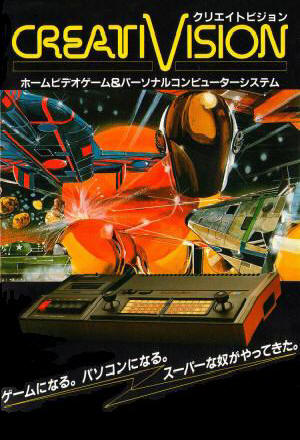 |
|
In an attempt to sell more console units, towards the end of 1982 (beginning of 1983) VTech decides to re-release CreatiVision with a
new shape and name. Unsold units are repackaged and named CreatiVision Mark II. The Funvision label debuts (sold as the Hanimex
Rameses and Dick Smith VZ 2000 in Australia). All had the same hardware, but the CreatiVision logo was removed from the console boot
sequence (modified BIOS?). The connector layout was changed and there the side peripheral connections were removed. The cartridge slot
was also changed in size to disable use of the "old" CreatiVision carts (an early form of region lock). In late 1983, VTech began to focus on a new challenge: to surpass their video gaming hardware and focus their efforts on the emerging home computer market. A new brand of home computers is established, named the Laser. Various models are produced with the names of Laser 100/110, 200/210 and 300. All of these units would share one common theme - incorporating very inexpensive, outdated processors (such as Zilog Z80 microprocessors). This was in stark contrast to their previous focus on the CreatiVision console. |
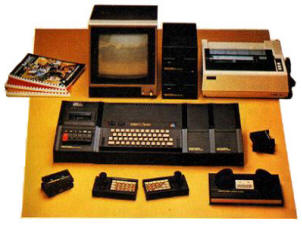 |
|
The Laser 2001 home computer is this story's last star, hitting the market towards the end of 1983/early 1984. It featured almost the
same hardware as CreatiVision but is powered with more RAM, includes a professional keyboard, many peripherals and is a true,
full-blown home computer! CreatiVision cartridges are fully compatible with Laser 2001, with many games repackaged in new boxes
featuring the Laser logo. To this very day, there are many CreatiVision enthusiasts sites dedicated to developing new software and keeping alive VTech's gaming vision. This unsung star, in both the console and home computer fields, definitely merits the attention of any gaming collector. |
|
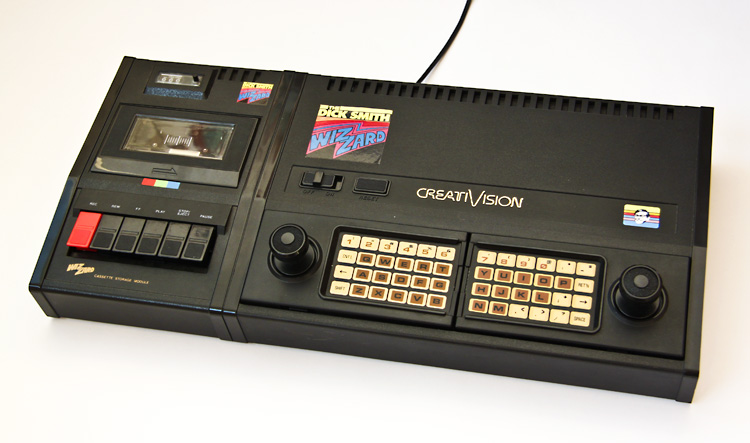 Above picture courtesy of 8Bit Home Computer Museum |
|
|






 2010s - NOTES
2010s - NOTES


 MODELS
MODELS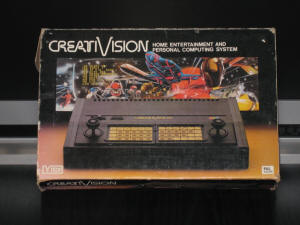
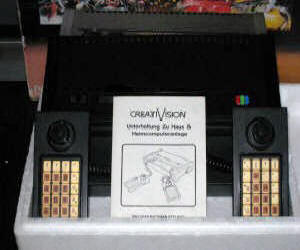
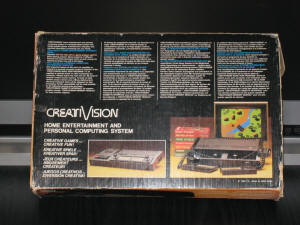
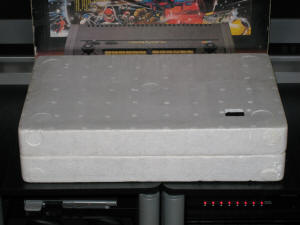
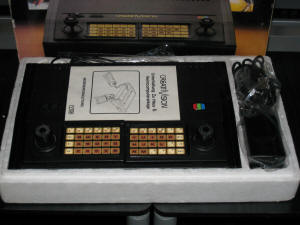
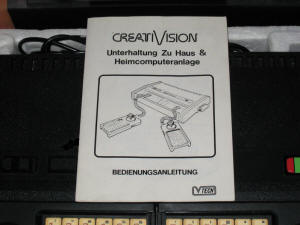
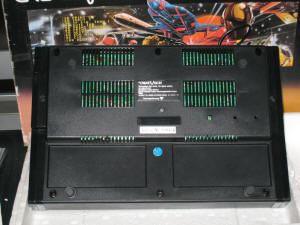
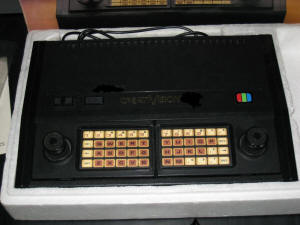
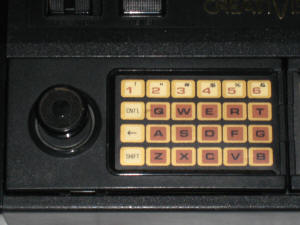
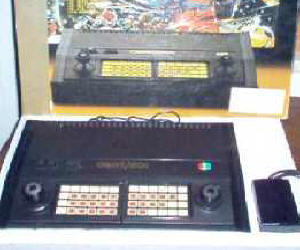
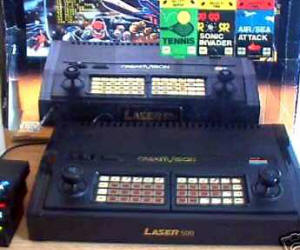
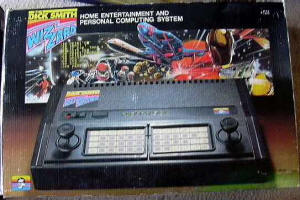
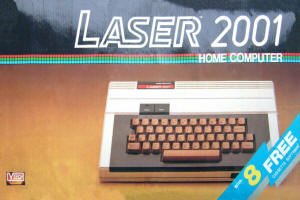
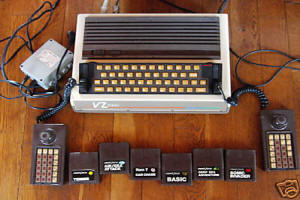
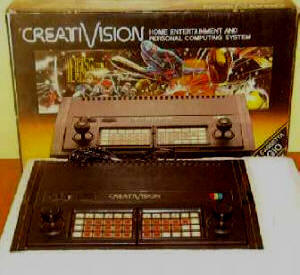
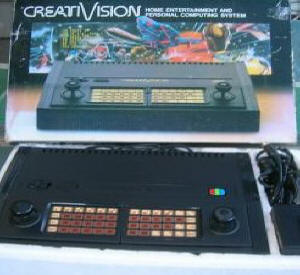
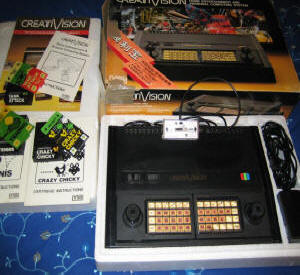
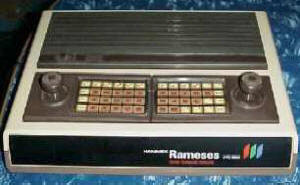
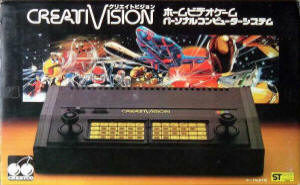
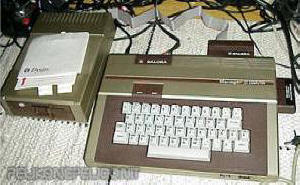
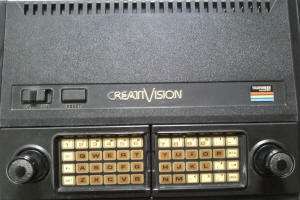
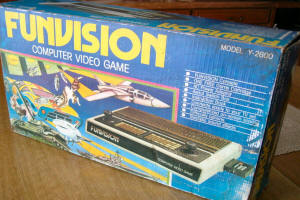
 CLONES
CLONES CONSOLE RATINGS
CONSOLE RATINGS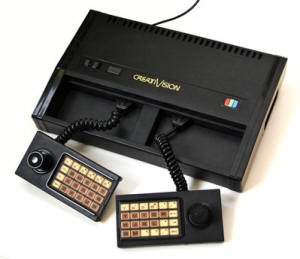
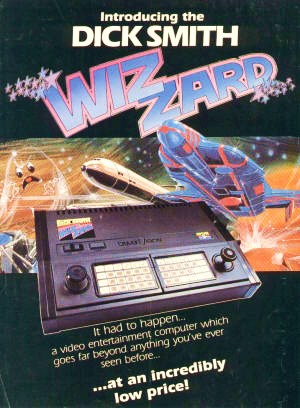
 FORMAT, PACKAGING & GENERAL INFO
FORMAT, PACKAGING & GENERAL INFO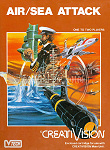
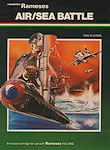
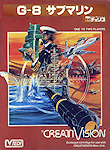
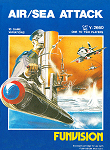
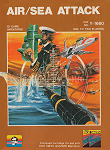
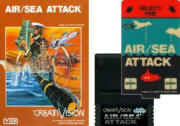
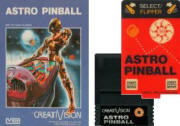
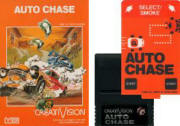
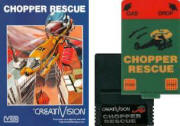
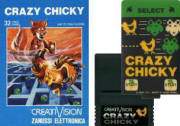
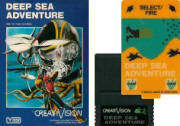
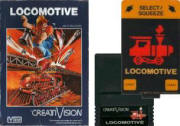
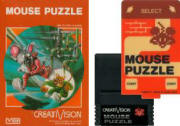
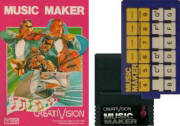
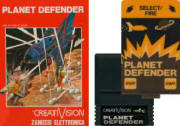
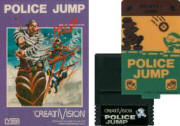
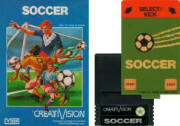
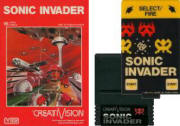
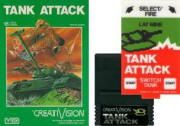
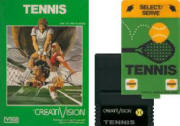
 SCREENSHOTS
SCREENSHOTS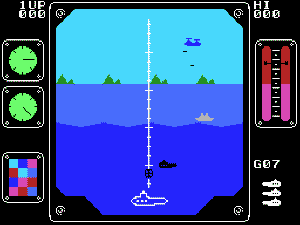
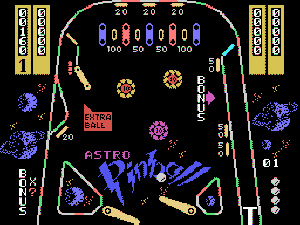
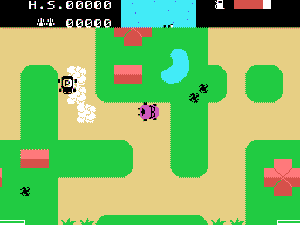
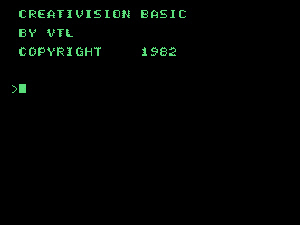
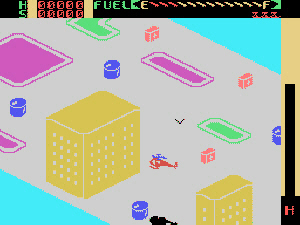
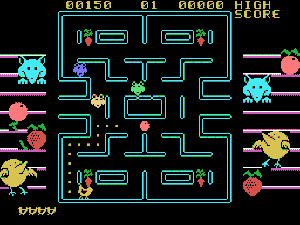
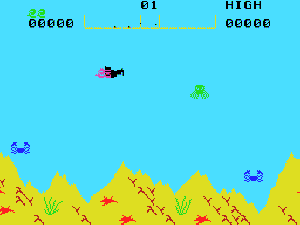
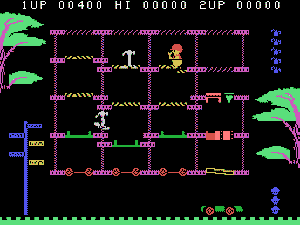
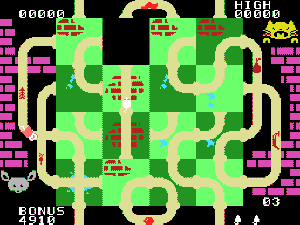
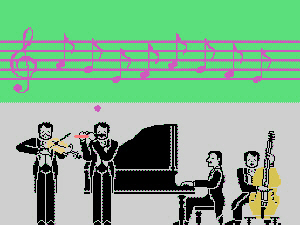
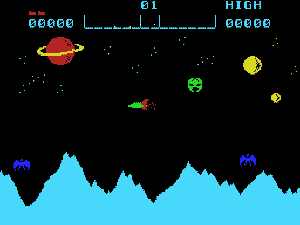
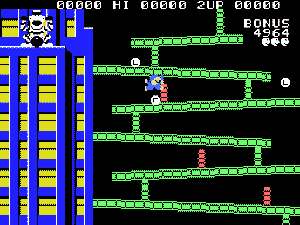
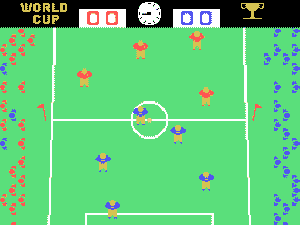
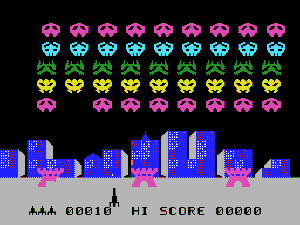
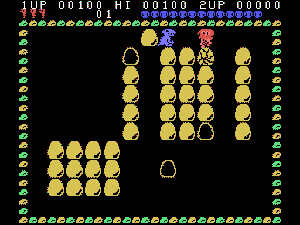
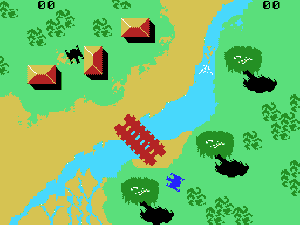
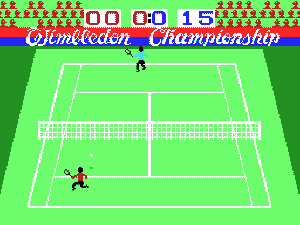
 EMULATION
EMULATION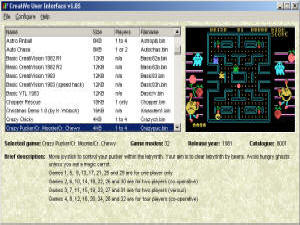
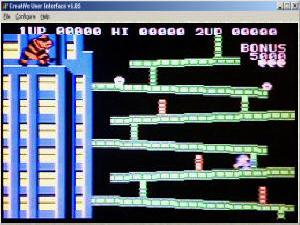
 SPECS & MANUALS
SPECS & MANUALS OTHER
MEDIA
OTHER
MEDIA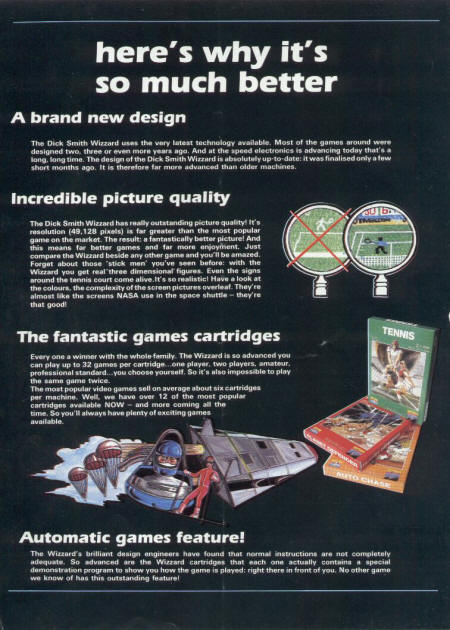
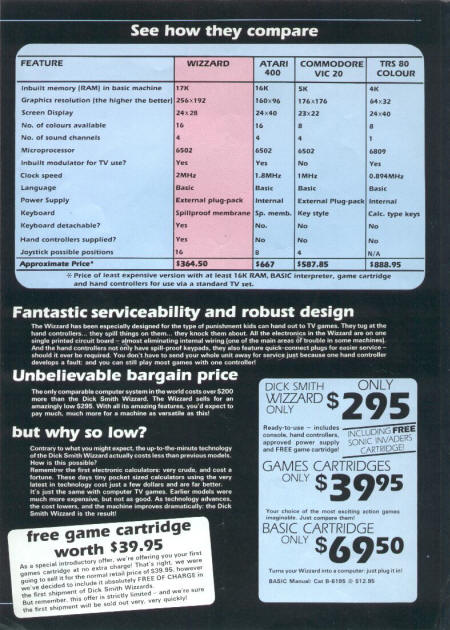
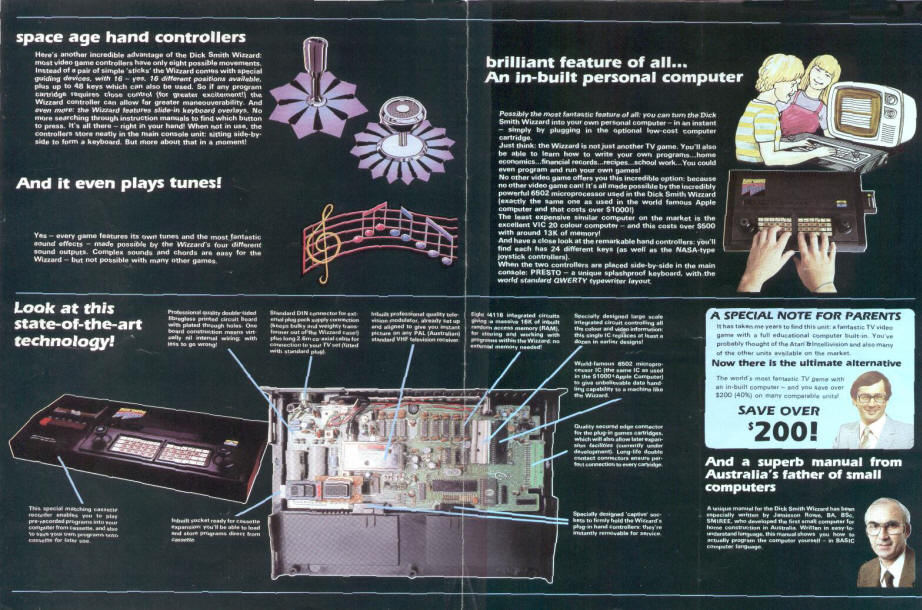
 WEB RESOURCES
WEB RESOURCES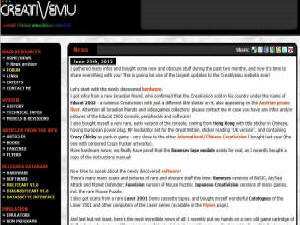
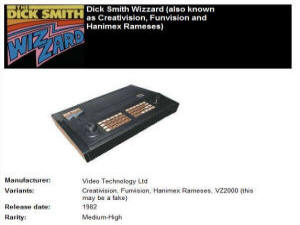
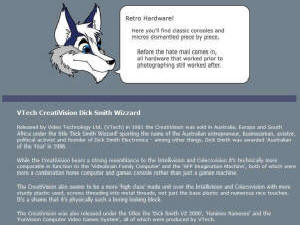
 DISCUSS
DISCUSS